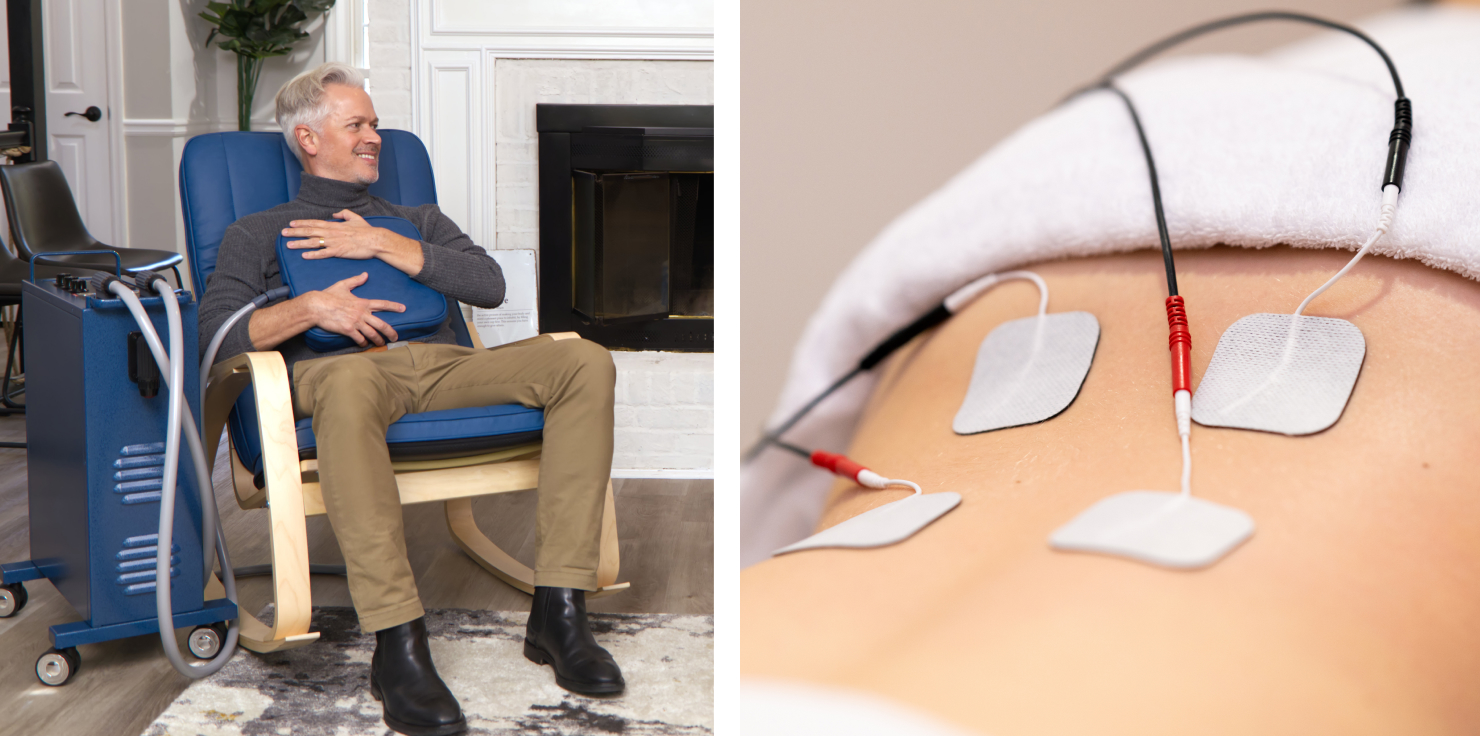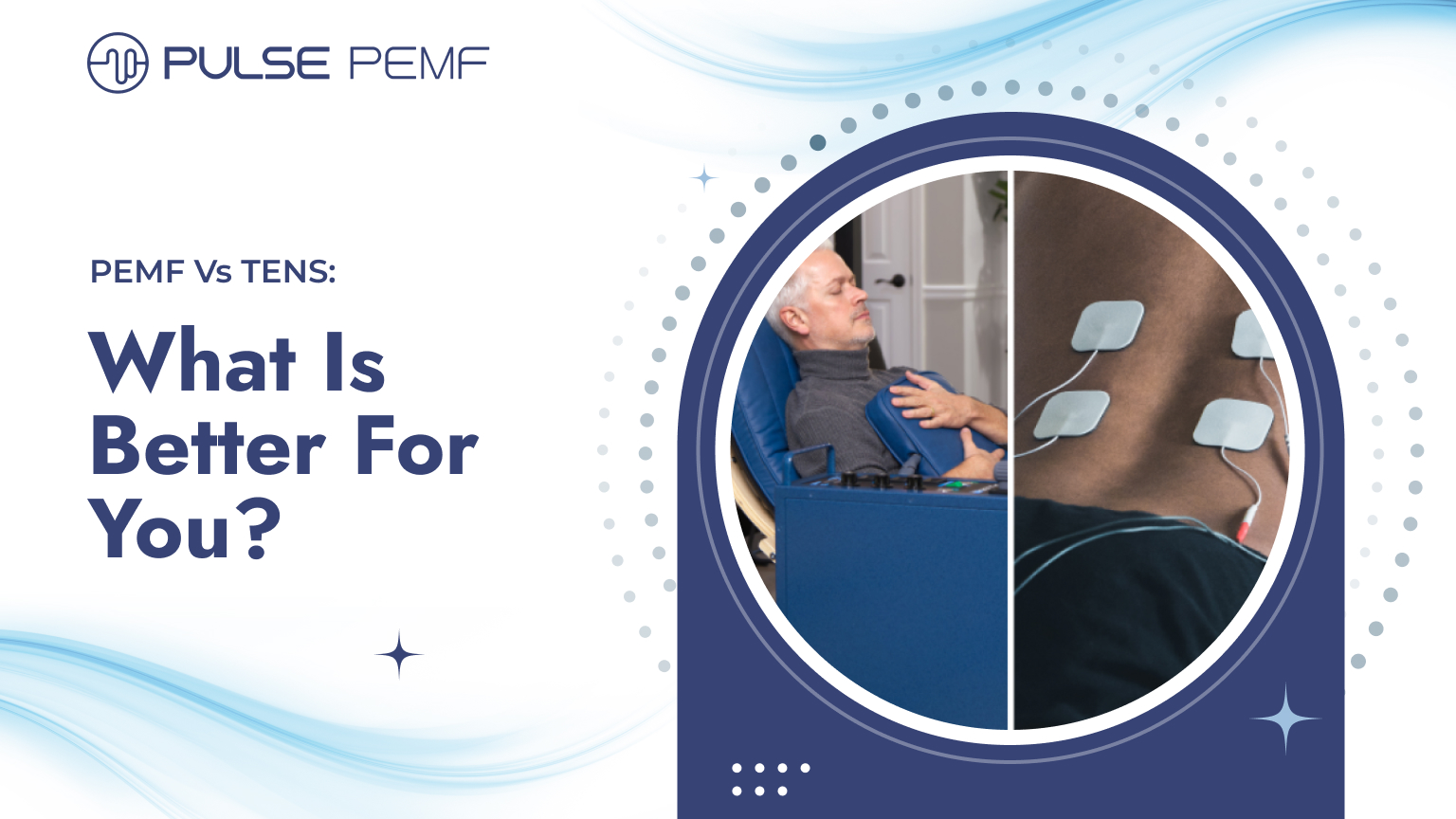Millions of people across the world struggle with discomfort daily – resulting in decreased energy and feeling limited in everyday activities.
If you’re seeking to reduce your pain, you might have come across two popular options:
Pulsed Electromagnetic Field (PEMF) therapy and Transcutaneous Electrical Nerve Stimulation (TENS).
But, with both claiming to support pain reduction, which one is right for you?
This article dives into the world of PEMF vs TENS, comparing their mechanisms and potential benefits.
By understanding how each works, you can make an informed decision about which option might best suit your needs. If you would like personalized guidance, be sure to consult with your healthcare professional.
Unmasking the Magic Behind Their Work

PEMF (Pulsed Electromagnetic Field)
So, what is PEMF really?
PEMF is a revolutionary wellness modality that utilizes electromagnetic pulses to stimulate the body’s cells, supporting the body’s self-healing abilities. As a result, beneficial effects may follow, including pain reduction, enhanced energy, and improved overall well-being.
Imagine your body as a battery running low on power. PEMF is like a powerful charger for your body, giving it the boost it needs to function at its best.
TENS (Transcutaneous Electrical Nerve Stimulation)
Unlike PEMF, TENS, or Transcutaneous Electrical Nerve Stimulation therapy uses electrical currents.
Targeting specific nerve pathways, these low-voltage currents are transmitted through electrodes placed on the skin. These currents stimulate the nerves, creating a tingling sensation that may potentially block pain signals, stimulate endorphins, and relax muscles.
PEMF vs TENS: Key Differences

While both PEMF vs TENS may offer pain reduction and wellness benefits, their approaches and ideal applications differ. Here are the key distinctions:
Target Ailments
Unlike other pain reduction solutions, PEMF gets to the very root of your discomfort, paving the way for optimized wellness. From common challenges amongst athletes to aging bodies, PEMF may be a viable solution for overall rejuvenation.
In contrast, TENS may tackle acute pain, such as that resulting from muscle tension and nerve pain. Its ability to block pain signals and stimulate endorphin release offers temporary relief for some minor conditions.
Application
PEMF devices come in various forms, including mats, pads, and localized applicators. Sessions typically involve placing the device on the affected area, allowing the low-frequency waves to penetrate the tissue. Sessions can be done daily or several times a week, depending on your needs and the specific device recommendations.
On the other hand, TENS units require direct contact with skin. Electrodes are attached to your skin near the pain source, delivering electrical pulses at adjustable intensities. The electrodes must be placed in specific locations and moved from one spot to another on the body. While effective in the area, this can be time-consuming and labor-intensive.
Effectiveness
While research is still ongoing, PEMF offers a promising long-term wellness solution with minimal side effects. From pain reduction to enhanced energy levels, this wellness modality has the potential to enhance many individuals’ quality of life.
TENS, on the other hand, enjoys a longer history of evidence-based support for specific pain conditions. Its effectiveness for acute pain, muscle tension, and some forms of nerve pain is well-established. However, like any wellness solution, both PEMF and TENS may have some side effects.
Side Effects

While TENS and PEMF are generally safe to use, some individuals may experience mild side effects.
TENS, for example, may cause mild skin irritation at the electrode sites, which usually subsides with proper electrode placement and skin care.
While rare, some individuals might also experience some side effects with PEMF, such as mild headaches or other minimal detox symptoms.
Consulting your healthcare provider before starting either therapy is crucial to ensure their safety and compatibility with your medical history.
How Can You Tell Which One You Need?
Navigating the diverse landscape of pain reduction options can be daunting, especially because PEMF vs TENS are both viable options. Understanding their overarching benefits and potential applications can guide you toward the therapy that best suits your needs.
If you’re seeking a long-term wellness solution to minimize pain, PEMF might be the right choice for you.
Ready to explore the possibilities of PEMF? Contact Pulse PEMF today!
Our expert team can answer your questions, address any concerns, and guide you on your path to a healthier you.












